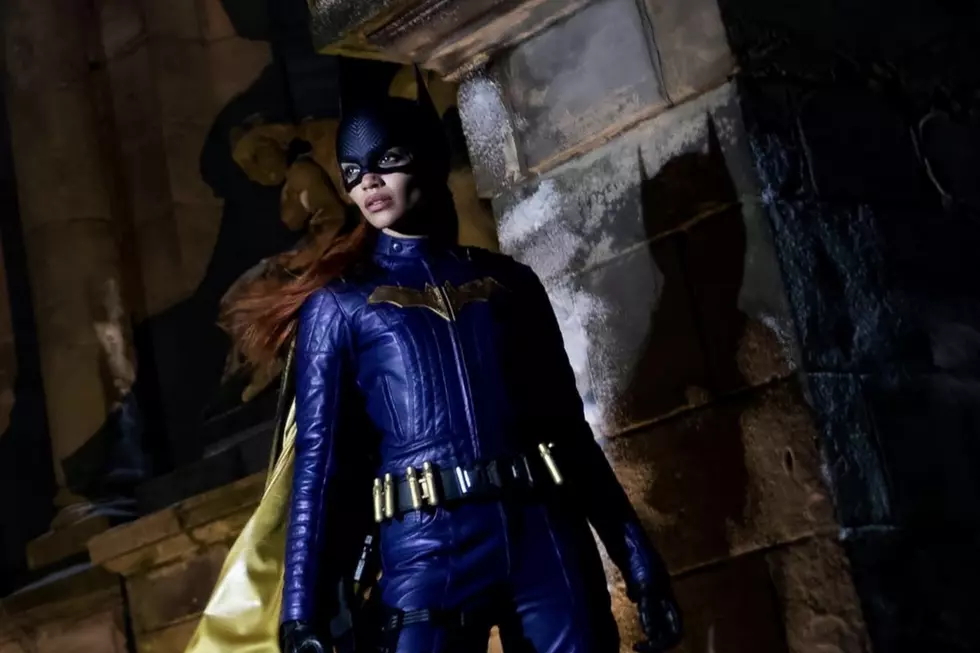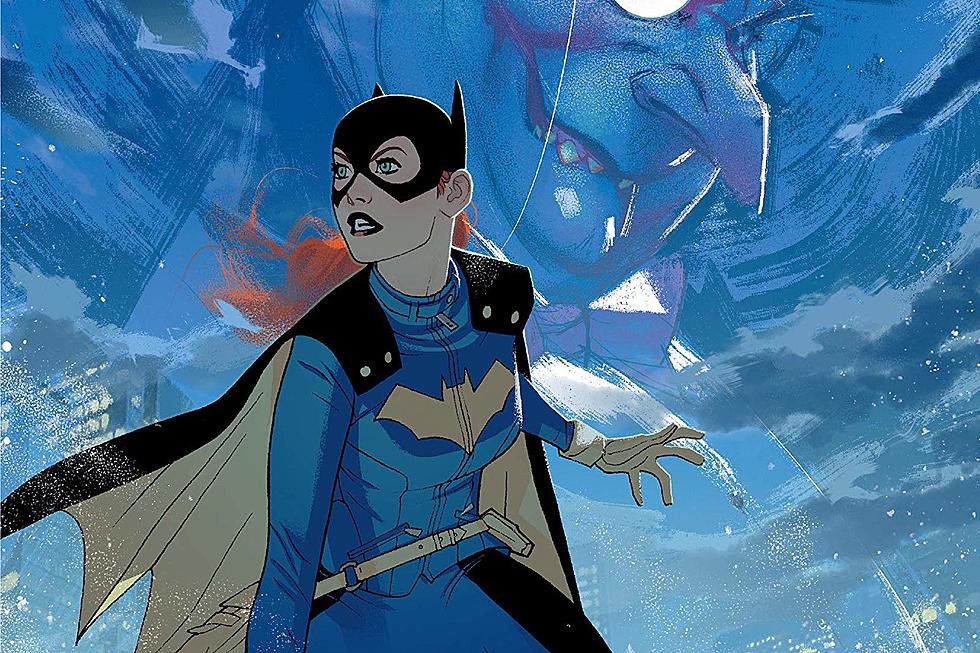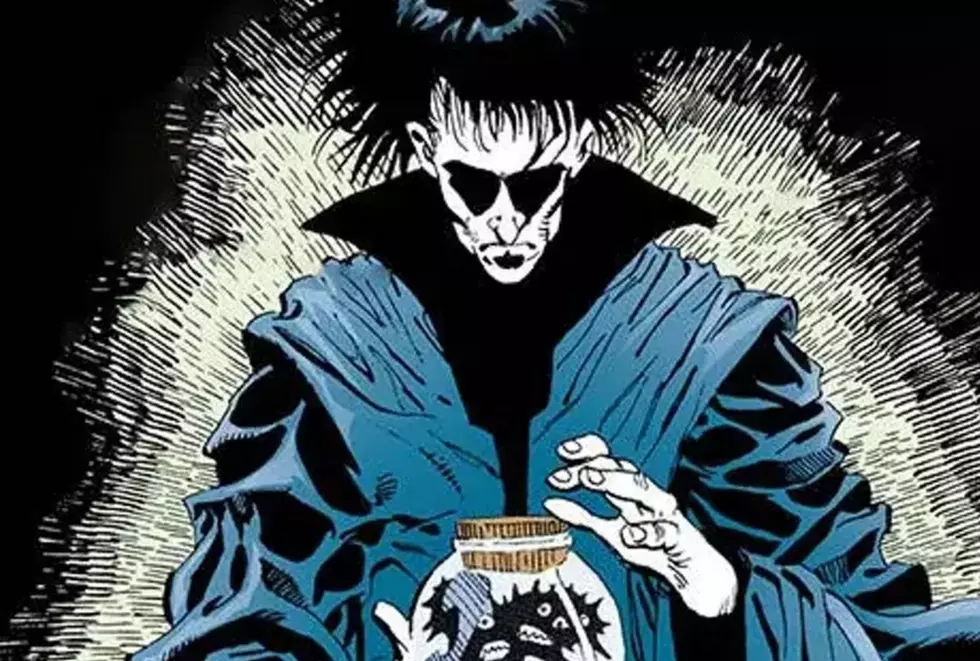
Batgirl And The Perpetual State Of Transphobia In Media
In my online discussions of transgender representation in media, I’ve mentioned that I expect a degree of transphobia is every medium I read, watch or listen to. That’s simply how pervasive the problem is -- and it may take the form of a joke, an off-the-cuff remark, or a non-essential character created intentionally or unintentionally to perpetuate stereotypes about gender variance or utilizing gender variance to underline said character’s psychosis.
It’s with a heavy heart I’m forced to discuss this long-standing media trope within the context of Batgirl, the one area of geek life I considered to be a safe-zone. Within the pages of Batgirl #37 we come across an impostor posing as Batgirl who ultimately plans to kill her in order to assume her identity. As you might imagine, my eyes nearly rolled into the back of my head, accompanied by an aggravated sigh, when the would-be murderer was revealed to be an individual assigned male at birth.
Is Batgirl’s doppelganger transgender? From my understanding, the answer is no; but as any trans person will attest, a character does not have to be explicitly labeled as transgender to perpetuate transphobia.
The word transgender indicates a gender identity that is not in alignment with the sex an individual was assigned at birth. Social Services With Transgendered Youth (2009), edited by Gerald P. Mallon, explains; “[p]opularized by Virginia Prince in the late 1970s, ‘transgender’ (or ‘transgenderist’) originally referred to someone who did not desire gender-conforming medical intervention [meaning hormone replacement therapy and surgical reconstruction] and/or who considered that they fell ‘between’ genders. Prince and others conceived transgender as a challenge to older terms that hinted at pathology or medicalized identity such as terms like ‘transsexual’ and transvestite’.”
Although the term was also met with controversy, since it originally excluded those who did wish to undergo medical transition, it is now used as an umbrella term to describe any identity that is gender variant, whether the individual is seeking medical intervention or not. Modern activists also use the term trans without the use of a suffix to avoid alienating members of the community. Our convoluted history of terminology illustrates our being at odds with a medical community that has historically demonized gender outside of cisnormativity, much in the same way any sexual orientation outside of heteronormativity was pathologized as a mental disorder. Aided by the medical community, our society’s strict adherence to gender conformity is what has fueled the portrayals of gender variant killers throughout the history of the American entertainment industry.
The impostor Batgirl, Dagger Type, is reminiscent of Norman Bates in Psycho (1960) as well as Buffalo Bill from The Silence of the Lambs (1991). Not unlike Dagger Type, in both instances we have characters who are assigned male at birth who assume the identities of women and commit heinous acts of murder as part of their modus operandi.
As stated in Queer (In)Justice: The Criminalization of LGBT People in the United States (2011), by Mogul, Ritchie, and Whitlock, “[b]oth Norman Bates and Buffalo Bill are emblematic of the archetype of the lethal gender bender, which emphasizes male gender anguish, deception, disguise, and the homicidal destruction of normal others as essential to a twisted gender transgression.” In both films, other characters portraying medical professionals take the time to explicitly state that neither Bates nor Bill are actually trans women, presumably because that’s exactly how any viewer uninitiated into the complexities of gender identity would interpret them.
We’re stuck with the same scenario in Batgirl, and like the critical commentary surrounding Norman Bates and Buffalo Bill, no amount of explanation concerning Dagger Type will dilute how unnerving this portrayal of “gender non-conformity as a prelude to murder” is.
To add insult to injury, the deliberate dichotomy of Barbara Gordon -- a cisgender woman -- as the real Batgirl against the gender variant Dagger Type as the impostor echoes the very real bias social conservatives and trans-exclusionary radical feminists have towards trans women. It reinforces the idea that any individual assigned male at birth cannot and should not be acknowledged as a “real” woman.
Had Dagger Type appeared in any other comic book published this year, I probably would have had the same reaction, but it wouldn’t have stung quite so deeply as it did reading Batgirl. It’s no secret that Barbara Gordon is my favorite character, and the introduction of trans woman Alysia Yeoh struck a personal cord with me.
For trans women who are embroiled in a life-long battle to have our identities as women acknowledged and respected, Barbara’s refusal to engage in biological or genital "essentialism” initiated a much needed discussion about gender in mainstream comic books that we haven’t witnessed since the character Wanda in Neil Gaiman’s Sandman. Far from perfect, Wanda was at the very least, a step in the right direction. In comparison, Batgirl #37 sends us right back into the Dark Ages.
Even if we took trans identification out of the equation and discussed gender exclusively as performance (as Dagger Type is motivated by the prospect of fame), this issue would still be a disservice to the Drag community, which has also been subjected to discrimination. While gender as a temporary performance may be interpreted as less threatening than permanent transition, any gender presentation outside of cisnormativity can be met with violence, including assault, rape and murder.
It is not uncommon for trans women to perform Drag either. Trans revolutionaries such as Sylvia Rivera and Marsha P. Johnson self-identified as transvestites—the dominant terminology of their time -- but were also known to be Drag Queens. Johnson’s murder was never properly investigated, and ultimately ruled a suicide; a common reality for many trans women of color. For communities whose members are often the victims of murder, caricatures of ourselves as homicidal sociopaths must end.
While I do not believe characters who are gender variant should never be portrayed as villains, as a trans writer, even I would be hard-pressed to create one that didn’t make me cringe with fear at the damage they could inflict upon the community.
The Batgirl creative team, which includes Cameron Stewart, Brenden Fletcher and Babs Tarr, issued a joint apology regarding the portrayal of Dagger Type. Within their statement they chose not to divulge their intentions with the character, which are moot at this point, and I believe that was the correct course of action. Intentions do not erase consequence and more often than not, the injured party is already aware of your intentions. While Barbara Gordon will always be my most beloved fictional character, Batgirl is no longer a series I am particularly invested in reading.
J. Skyler is an author, public speaker and activist on LGBT history, culture, and politics, and feminism and gender equality. You can read more of her writing on comics at Comicosity, and follow her on Twitter at @JSklyerInc.
More From ComicsAlliance









